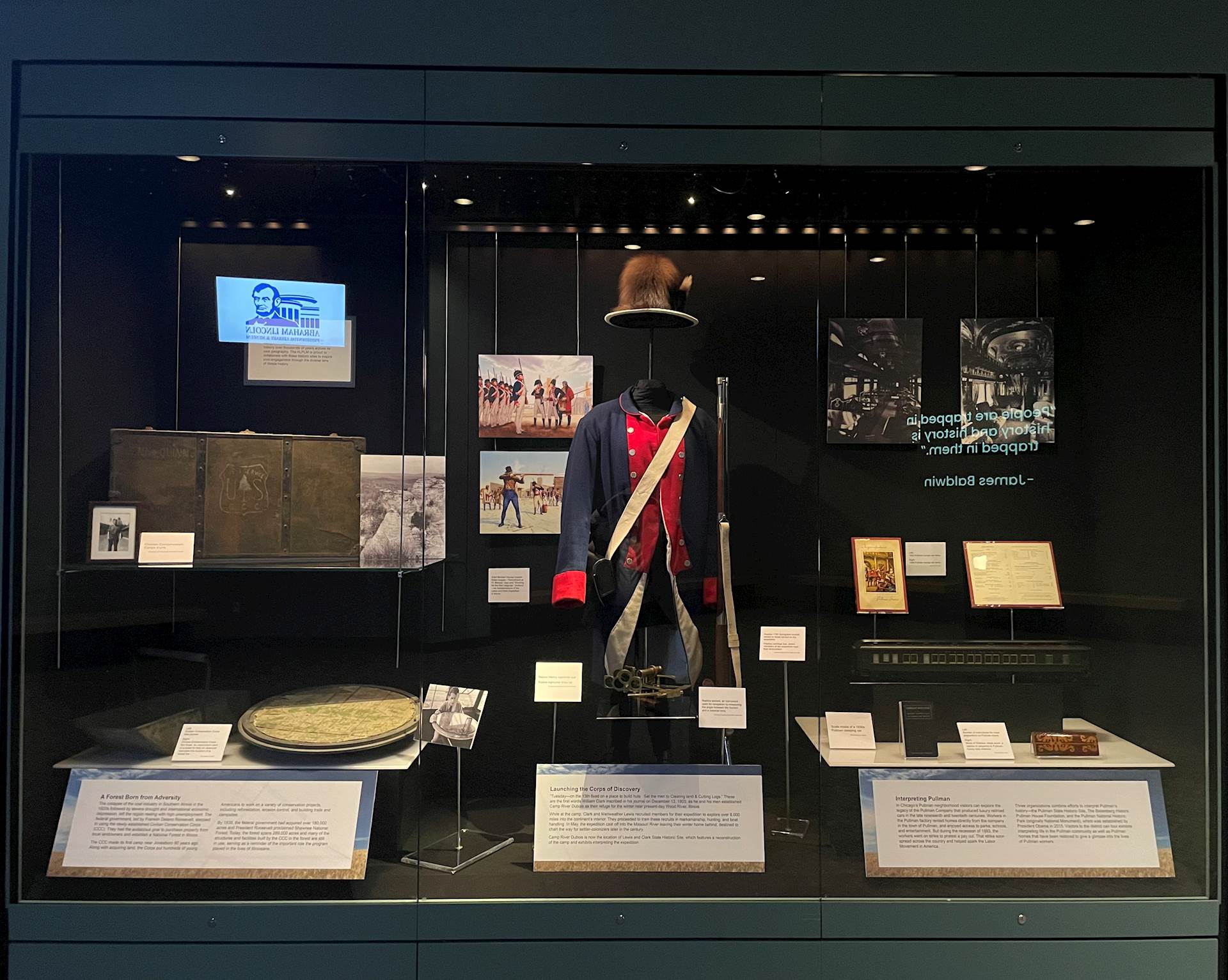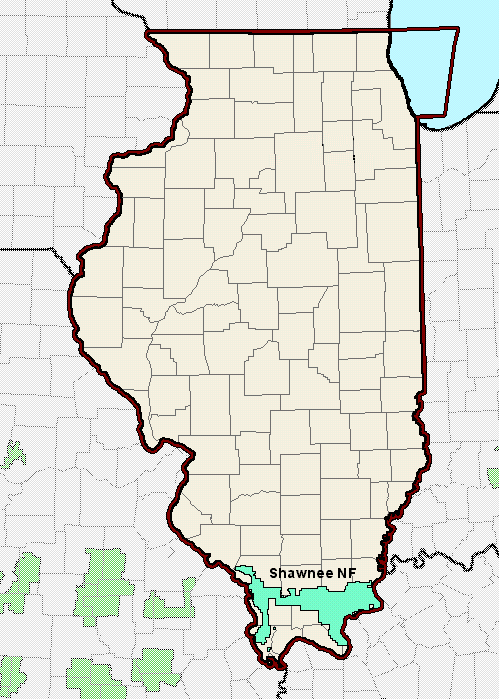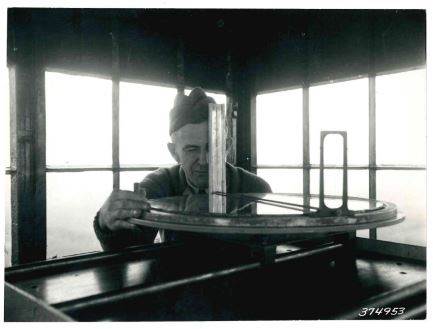By Dr. Jacob Friefeld
The ALPLM is currently partnering with state and federal historic sites to share Illinois’s rich history in our museum. One of the organizations we are proud to collaborate with is the Shawnee National Forest, which provides Illinoisans with 289,000 acres of forest, wetlands, and canyons to enjoy. But this site of modern recreation was the product of harder times.
 The "Prairie State Places" exhibit at the ALPLM, including items from the Shawnee National Forest, Lewis and Clark State Historic Site, and Pullman train artifacts from the ALPLM collection.
The "Prairie State Places" exhibit at the ALPLM, including items from the Shawnee National Forest, Lewis and Clark State Historic Site, and Pullman train artifacts from the ALPLM collection.
The 1920s had been good — maybe even roaring — for a lot of Illinoisans, but after the stock market crash of 1929, the world quickly plunged into the Great Depression. By 1933, 1.5 million Illinoisans were unemployed.
It hit even more quickly in many parts of southern Illinois. In towns like Eldorado, the all-important coal industry was crippled by competition from mines in Appalachia. In other parts of the region, deforestation paralyzed the logging industry and the worst drought in the nation’s history crushed farmers’ hopes of making ends meet.
Across the country, Americans suffered just as they did in Illinois, and the federal government needed to step in. President Franklin Delano Roosevelt oversaw the creation of programs that put Americans back to work while improving critical infrastructure. One of these programs was the Civilian Conservation Corps (CCC).
The CCC employed young men on reforestation and conservation projects. In Illinois that meant hiring farm boys like Cordell Addison who worked on CCC projects at Giant City State Park in southern Illinois and in Willow Springs, near Chicago. He remembered that before joining the CCC, he settled for irregular work haying, cutting asparagus, and picking peaches. “I couldn’t get a job,” Addison remembered in his interview with the ALPLM’s Oral History Program. “So a lot of young fellows were joining the CCC camp, which paid thirty dollars a month.”
The CCC kept young men like Addison and their families fed.
The CCC’s most audacious goal was to purchase property from local landowners and establish a national forest in southern Illinois. By 1939, they had acquired over 180,000 acres and President Roosevelt declared the land to be Shawnee National Forest (nearly named Lincoln National Forest).
 USDA map of Illinois showing the Shawnee National Forest
USDA map of Illinois showing the Shawnee National Forest
Along with acquiring land, the CCC set to work on conservation projects, including reforestation, erosion control, and building trails and campsites. They also protected the new national forest, locating fire finders in tall towers to help rangers locate forest fires.
Today, many of the structures and facilities built by the CCC are still in use, serving as a reminder of the important role the taxpayer-funded program played in the lives of Illinoisans and the state at large.
 Fire finder in use at Shawnee National Forest. The user locates the fire on the horizon and uses the fire finder to calculate the direction and distance from the watch tower. Courtesy of the Shawnee National Forest.
Fire finder in use at Shawnee National Forest. The user locates the fire on the horizon and uses the fire finder to calculate the direction and distance from the watch tower. Courtesy of the Shawnee National Forest.
Friefeld is the ALPLM’s Midwest Studies Historian. The exhibit that includes Shawnee National Forest will displayed until late July 2023.